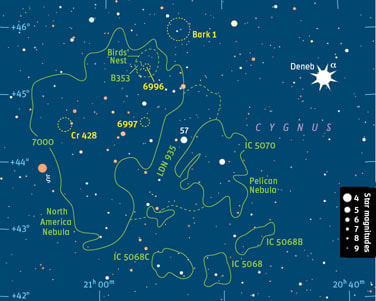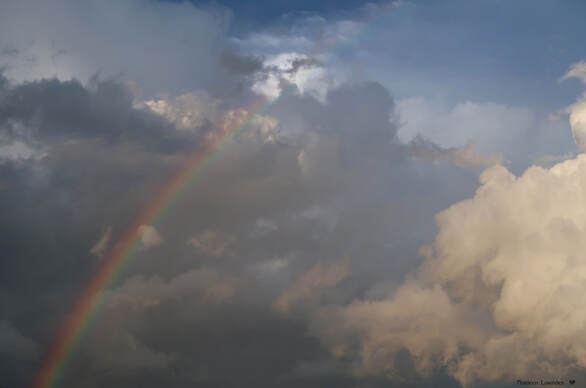The camera was piggybacked on top of a tracking 10inch Meade LX200 Schmidt-Cassegrain telescope in my Stardust Observatory.
20 images were captured with an exposure time of 2 minutes each, with corresponding dark frames, ISO 3500 and lens set at f3.5. Images were stacked in DSS (Deep Sky Stacker) and processed in PS CS4.
 Credit: Sky & Telescope Magazine Oct 2004
Credit: Sky & Telescope Magazine Oct 2004 ~ My Stardust Observatory ~
I’m just blown away by the rich star field in this part of the northern Milky Way in the constellation of Cygnus.
If I look out from my observatory at this part of the sky I can honestly say other than the bright stars of Cygnus you cannot see any of this beauty. But aim a camera in that direction and this is what you get…incredible!
Please note that here in Australia in the southern hemisphere we see the North America Nebula upside down so I’ve had to turn the image around, we really do live in the land down under :-)
My Stardust Observatory is situated in a very dark sky site at 28 degrees south latitude so Cygnus rises and sets very low above the northern horizon and I can only captured it in the months of September & October. To make matters a bit trickier there are tall gum trees and urban light from the city of Toowoomba in that direction.
During the new Moon weekends of September and October I concentrated on capturing some of these elusive northern sky objects with the North American Nebula and the Pelican Nebula being the first objects, other objects captured will follow soon…
(Information on the North America Nebula taken from page 811:
Burnham’s Celestial Handbook by Robert Burnham Jr)
North America Nebula (NGC 7000) is a vast cloud of mixed nebulosity, dust and stars, named by Dr. Max Wolf, and considered one of the outstanding features of the northern Milky Way. It lies some 3 degrees east of Deneb in the constellation of Cygnus.
There main mass of the nebula has a mottled appearance, which in the region of the “Atlantic coast” develops into an amazing pattern of shreds and streamers of nebulosity, both bright and dark.
Still farther out in the “Atlantic” this same pattern reappears even more strikingly into the detached nebulous island IC 5047, of tern called the Pelican Nebula’.
~ Wide Field view of Cygnus rising in the Northern Sky ~
(From inside My Stardust Observatory)
https://skyandtelescope.org/wp-content/uploads/DSW_Oct2004.pdf









 RSS Feed
RSS Feed
